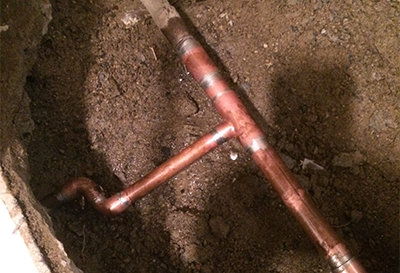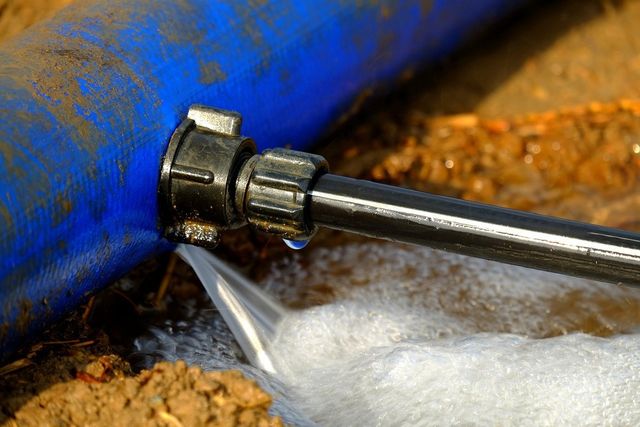Six Proven Methods to Identify Hidden Water Line Leaks Secretly
Six Proven Methods to Identify Hidden Water Line Leaks Secretly
Blog Article
Everyone has got their own unique opinions involving Top leak detection hacks.

Early detection of dripping water lines can minimize a potential catastrophe. Some little water leaks might not be visible.
1. Examine the Water Meter
Every residence has a water meter. Inspecting it is a guaranteed way that assists you discover leakages. For beginners, shut off all the water sources. Ensure no person will purge, make use of the faucet, shower, run the cleaning equipment or dishwashing machine. From there, most likely to the meter and also watch if it will certainly change. Considering that no person is using it, there must be no motions. If it relocates, that suggests a fast-moving leakage. Likewise, if you detect no changes, wait an hour or more and inspect back again. This indicates you might have a sluggish leakage that can also be below ground.
2. Examine Water Usage
If you detect abrupt modifications, despite your intake being the same, it implies that you have leakages in your plumbing system. An abrupt spike in your bill shows a fast-moving leak.
A stable rise every month, also with the same behaviors, shows you have a slow leak that's additionally slowly intensifying. Call a plumber to thoroughly examine your residential property, especially if you really feel a warm location on your flooring with piping below.
3. Do a Food Coloring Test
When it comes to water intake, 30% comes from toilets. If the shade somehow infiltrates your bowl throughout that time without flushing, there's a leak between the tank and dish.
4. Asses Exterior Lines
Do not neglect to inspect your exterior water lines too. Test spigots by affixing a garden hose pipe. Needs to water seep out of the link, you have a loosened rubber gasket. Replace this as well as make certain all links are tight. It will assist obtain it professionally analyzed as well as kept annually if you've got a sprinkler system. One small leakage can throw away tons of water and surge your water expense.
5. Examine as well as Examine the Scenario
Homeowners need to make it a routine to examine under the sink counters and also also inside cupboards for any type of bad odor or mold growth. These two red flags suggest a leakage so prompt attention is required. Doing regular examinations, also bi-annually, can save you from a significant trouble.
A lot more significantly, if you recognize your home is currently old, maintain a watchful eye on your heating units, tubes, pipelines etc. Look for discolorations and damaging as a lot of appliances and also pipelines have a life span. They will additionally naturally deteriorate as a result of tear and put on. If you think leaking water lines in your plumbing system, do not wait on it to escalate. Call a specialist plumber as soon as possible so you don't end up with a horrible mess in your home.
Early discovery of leaking water lines can alleviate a prospective calamity. Some tiny water leakages might not be visible. Examining it is a surefire method that aids you find leakages. One tiny leakage can waste lots of water and also spike your water expense.
If you believe leaking water lines in your plumbing system, do not wait for it to escalate.
WARNING SIGNS OF WATER LEAKAGE BEHIND THE WALL
PERSISTENT MUSTY ODORS
As water slowly drips from a leaky pipe inside the wall, flooring and sheetrock stay damp and develop an odor similar to wet cardboard. It generates a musty smell that can help you find hidden leaks.
MOLD IN UNUSUAL AREAS
Mold usually grows in wet areas like kitchens, baths and laundry rooms. If you spot the stuff on walls or baseboards in other rooms of the house, it’s a good indicator of undetected water leaks.
STAINS THAT GROW
When mold thrives around a leaky pipe, it sometimes takes hold on the inside surface of the affected wall. A growing stain on otherwise clean sheetrock is often your sign of a hidden plumbing problem.
PEELING OR BUBBLING WALLPAPER / PAINT
This clue is easy to miss in rooms that don’t get much use. When you see wallpaper separating along seams or paint bubbling or flaking off the wall, blame sheetrock that stays wet because of an undetected leak.
BUCKLED CEILINGS AND STAINED FLOORS
If ceilings or floors in bathrooms, kitchens or laundry areas develop structural problems, don’t rule out constant damp inside the walls. Wet sheetrock can affect adjacent framing, flooring and ceilings.
https://www.servicemasterbyzaba.com/blog/how-to-detect-water-leakage-in-walls/

As a passionate person who reads on Detecting hidden plumbing leaks, I figured sharing that piece of content was really helpful. Please take the opportunity to distribute this write-up if you appreciated it. Thanks a lot for your time invested reading it.
Top-notch fix? Dial! Report this page